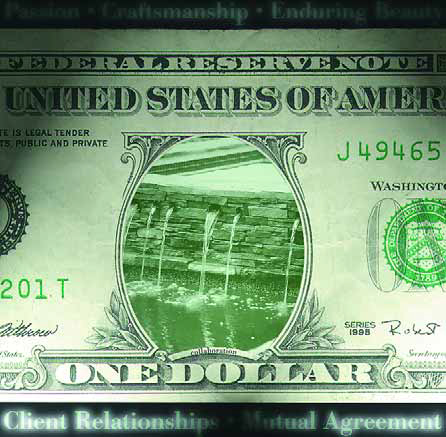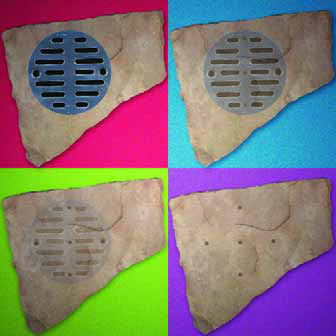aesthetics
For many people in the watershaping trades, client relationships begin with selling and never really advance beyond that stage. For me, however, it's not about selling per se; instead, it's about creating a sense of collaboration and building a foundation of mutual trust and understanding. In fact, the work I do in establishing these creative relationships with my clients may well be the most important "detail" of all. In a sense, watershaping isn't a job to me. It's my passion, which explains why I'm so obsessed with
In the ballet of sequenced water, you'll find a repertoire of effects for watershapes of all kinds. Like individual dance steps, these water effects can be beautiful on their own - or they can be used in combination with other effects to create elaborately choreographed shows that dazzle, delight and entertain. From simple to complex and from small to utterly huge, sequenced-water effects are truly amazing, and the nice thing is that they can be incorporated into all kinds of watershapes. We'll take a look at some of the possibilities here as a means of defining why you and your clients should think about incorporating the devices needed to make them work in your projects. There are practical issues, of course, so we'll also cover the process of designing for sequencing and the considerations involved in the creative effort, as well as discussing the ins and outs of programming and commissioning for sequenced watershapes. In an extensive sidebar, we'll also take a look at available technologies and their strengths and weaknesses. Before we get into
You'd think that having lousy-looking deck drains was inescapable, given that about 99.9% of them look like a thing you'd find in your shower. Whether you're using PVC or brass grates, they disrupt the surface of any decking material and to my way of thinking are an unnecessary eyesore - nearly criminal when they interrupt the look and texture of a beautiful expanse of stone. It just doesn't make any sense to draw that much attention to the drains. That's why I decided to develop a deck-drain detail that doesn't break up the visual lines of the deck. It's extremely simple - and it's something you can
It's an age-old paradox, this relationship between art and science. On the face of it, things artistic may seem solely the realm of high-flying thinkers and philosophers who spend their days at the far reaches of interpretation and meaning. By contrast, engineers and scientists would seem to be dealing purely in the certainties of what is quantifiable and real. The truth is, I don't know of a modern art form that doesn't involve technology of some kind. Conversely, most branches of modern science call upon researchers to apply a great deal of intuition and creativity to the processes of exploration and discovery. In other words, neither the arts nor the sciences could exist without ideas and disciplines derived from the other. That's especially true when it comes to water systems. Whether created for aesthetic or recreational purposes, art and science can come together here in a particularly compelling and interesting way. By combining technical disciplines with

















Insights at the Kitchen Table